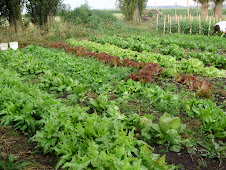
The Oberhasli goat is a dairy breed developed in Switzerland in the mountains around Bern and Freiburg. Oberhasli goats were first came to the United States in the early 1900s. Goats are generally brown, but can range from light tan to deep reddish brown and have black stripes down there back, on their belly, and their face. Oberhasli goats milk is the most similar to cows milk and one of the reasons that we got this breed, on top of the fact that it is about the only real dairy breed on the American Livestock Breeding Conservancy list.
Our goats came from Edelweiss Acres in Olympia, Washington. They use Oberhasli goats primarily has pack goats because of their disposition. We have two females, both of which are pregnant and expecting sometime at the end of February. We will use the milk for our own use, both to drink and to make cheese. We will get a pasteurizer sometime around the time they have their kids. This is not really a money making effort for us, but something that we thought would be fun to try, especially making cheese. We have made cheese before but it is more difficult using store bought milk that has been homogenized.
We currently have our goats with our two Southdown sheep and we got an Oxford sheep that I will talk about in our next post. The 5 animals are still trying to adjust and the Southdown sheep our exhibiting their shyness and keeping their distance from their new pen mates.



